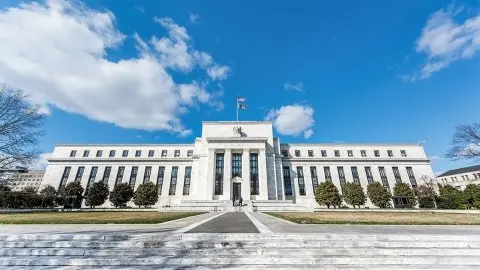Worsening leverage metrics. Should we be alarmed?
Worsening leverage metrics, deteriorating credit quality and substantial downgrades are all signals for long-term concern for credit markets. Yet based on current spread levels, the market is not pricing this in and looks to be expecting an optimistic Covid-19 outcome
Key takeaways
- We recommend a conservative approach when considering credit risk, in particular, the lower-rated instruments and issuers and those from sensitive sectors. Technical factors such as quantitative easing will dominate the market but more diversification and caution is advised. Depending on QE in the meantime, a positive stance but a dangerous assumption as previous periods have proved.
- Spread comparisons to earlier credit spread widening time periods like late 2015 and late 2018 would indicate that the current crisis is something similar. Exponentially rising leverage would argue a different case.
- On the back of the crisis, collective corporate leverage measurements have been rising to unprecedented levels. This was particularly the case in 2Q20 when lockdowns were most prevalent.
- Leverage metrics have been worsening over the course of the last few years and 2020 has just been a catalyst in this trend. This is certainly something to be monitored, with the potential for some concern.
- The quality of covenants within loans have been deteriorating over the past few years. The jump to default compensation should thus be higher as debt holders are offered a lot less protection.
- Downgrades in both Europe and the US have reached substantially high amounts in 2020, even compared to 2018 and 2015. And for non-financial corporates even the credit crisis downgrade numbers are benign.
- Current spread levels show the market is not pricing in these worsening metrics – particularly with the worsening trend in total debt to EBITDA numbers. Meanwhile, the lack of major spread widening that should have been expected is very evident when looking at the spread compensation over total debt to EBITDA.
Leverage has increased, with gross measures looking even more elevated
As the Covid-19 pandemic continues to impact economies around the world, and the impact is felt across sectors and companies, it is natural that collective corporate leverage measurements have been rising, with a particularly telling impact experienced during the second quarter when lockdowns were the strictest across everywhere.
Additionally, energy prices have dropped as one of the additional and secondary effects, impacting the oil & gas sector and related sectors more specifically. Furthermore, given the heightened economic uncertainty, entities across the rating spectrum rushed to beef up their liquidity cushions, pre-fund and refinance existing debt.
The trend of rising leverage, already visible pre-Covid, has been given a serious boost whilst spreads seem comfortable in their ignorance
This was helped by the low-interest-rate environment and central banks' support extended to facilitate such liquidity hoarding. Therefore, gross debt measures have increased even more than the net debt ones, amplifying the visual impact on leverage from lower earnings.
Nonetheless, the trend of rising leverage, already visible pre-Covid, has been given a serious boost whilst spreads seem comfortable in their ignorance.
US high-yield total debt to EBITDA

Certain sectors are affected more than others
While the effects of the pandemic are quite pervasive and multi-faceted, certain sectors are prone to having a greater impact from the current economic dislocation. Those include leisure, hospitality, high street retail, air travel and related services, certain segments of business services, automotive and oil & gas.
Those sectors have experienced a disproportionate increase in leverage measures and are the most prone to restructuring and defaulting on their debt obligations.
US high-yield spread to Worst

How transitory is the current rise in leverage measures?
Given the current valuations, we understand that the bond markets, propped by ample liquidity and certain exogenous support, are currently willing to overlook the current spike in leverage and prefer to look towards a brighter post-pandemic future.
Our expectation is that business across sectors will still position next year as a post-pandemic “transition” year, almost regardless of the underlying public health picture
We're not completely dismissing such a market stance and have an open mind giving this perspective the benefit of doubt. As the worst of the Covid-19 could be well behind us as certain economies recover and with a potential to recover ahead of current expectations, it may well be that the current elevated measures may be on the way towards subsiding. While liquidity is ample and solvency is not imploding the worst may be avoided and defaults may not materialise to the same extent as was feared at the peak of the pandemic.
One word of caution is that while economies and individual sectors may be on the mend, the recovery may be more prolonged and laborious than is hoped for in the current relatively optimistic phase. The length may not have be “lethal” with proper ongoing policy measures, but pre-Covid year-end 2019 metrices may only really recover in a couple of years rather than in 2021.
In fact, we expect business across sectors will still position next year as a post-pandemic “transition” year, almost regardless of the underlying public health picture.
US high-yield total debt vs EBITDA
- Total debt to EBITDA now at highest levels ever
- Only Industrials, Technology and Healthcare are not
- Substantially high Leisure and Real Estate levels (double-digits)
- Energy leverage below late 2016 peak, but low in comparison to Utility & Transport
Spread / US high-yield total debt to EBITDA per sector
- Late March spreads resulted in high spread / leverage ratios
- Now close to late 2015 or late 2018 levels (tapering/ improving economic outlook, rise in yields and spreads)
- The comparison does no justice to pressure on revenues and credit metrics
Spreads not pricing in the worsening metrics
At current spread levels, we believe the credit market is somewhat rich.
It is clear spreads have not priced in these worsening metrics. Particularly as illustrated below and in the tables above, whereby we can see the worsening trend in total debt to EBITDA numbers in the US. Additionally, the spread over the total debt to EBITDA shows the lack of major spread widening relative to the worsening metrics.
- Spread compensation since late Q1 has fallen dramatically and is comparable to late 2015 and late 2018 market “wobbles”
- Spread compensation for (rising) leverage has also seen a decreasing turn from pre-Covid 19 levels
Covenant quality has deteriorated substantially
Moody’s Loan Covenant Quality Indicator assess the quality of covenants within loans. The quality of loan covenants are falling considerably and this is a worrying trend in the loan market as it offers little protection to investors and issuers. As illustrated below, the loan covenant quality indicator in the US has been falling over the past 8 years.
For some time now, the indicator has been below the weak level protection threshold which in itself is already worrying. However, in 4Q19 we were already approaching the weakest level protection threshold, which makes us more cautious on the loan markets.

Loans much more dominant source of financing relative to bonds
Taking a look at the issuance levels of bonds and loans over the past 16 years as illustrated below, loans are a much more dominant source of financing relative to bonds, particularly up against the opposite in USD.
Despite Euro investment grade supply reaching new record-breaking amounts this year and last year, overall euro supply remains low relative to loans.
We expect bond supply in 2020 to approach €500bn, now standing at €356bn year-to-date. Euro high yield bond supply, on the other hand, has been lower YTD at just €43bn, highlighting lower ECB support and also a (subsequent) greater dependence on loan markets.

More downgrades in 2020 as credit metrics worsen
Relative to late 2018 and late 2015, downgrades in both Western Europe and the United States have been considerably high this year on the back of the crisis.
In the US, year-to-date downgrades have already doubled that of full-year figures in 2018 and 2015, pencilling in 1,115 downgrades in total. Similarly in Western Europe, downgrades have amounted to 405, which is already considerably more than the full-year figures of 2018 and 2015.
The vast majority of downgrades have been in high yield. Furthermore, fallen angels have also seen an increase compared to previous years. This is a prime illustration of the deteriorating credit metrics this year, further suggesting the market is not pricing in these worrisome signs.
Downgrades in 2020 vs 2018 & 2015 in Western Europe and the US
Despite the worsening leverage metrics and deteriorating quality, the market is still looking at the most optimistic outcome. Downgrades have indeed reached considerable levels, but defaults may not materialise to the same expectations that were being priced in at the peak of spread widening back in March.
However, now that current spread levels are looking somewhat rich and the market is not pricing in these worsening metrics, particularly with the worsening trend in total debt to EBITDA numbers and the spread over the total debt to EBITDA showing the lack of spread widening.
This may lead to some reason for concern.
This publication has been prepared by ING solely for information purposes irrespective of a particular user's means, financial situation or investment objectives. The information does not constitute investment recommendation, and nor is it investment, legal or tax advice or an offer or solicitation to purchase or sell any financial instrument. Read more
Download
Download article
18 September 2020
Covid-19: The economic alarm bells ring loud This bundle contains 9 Articles




